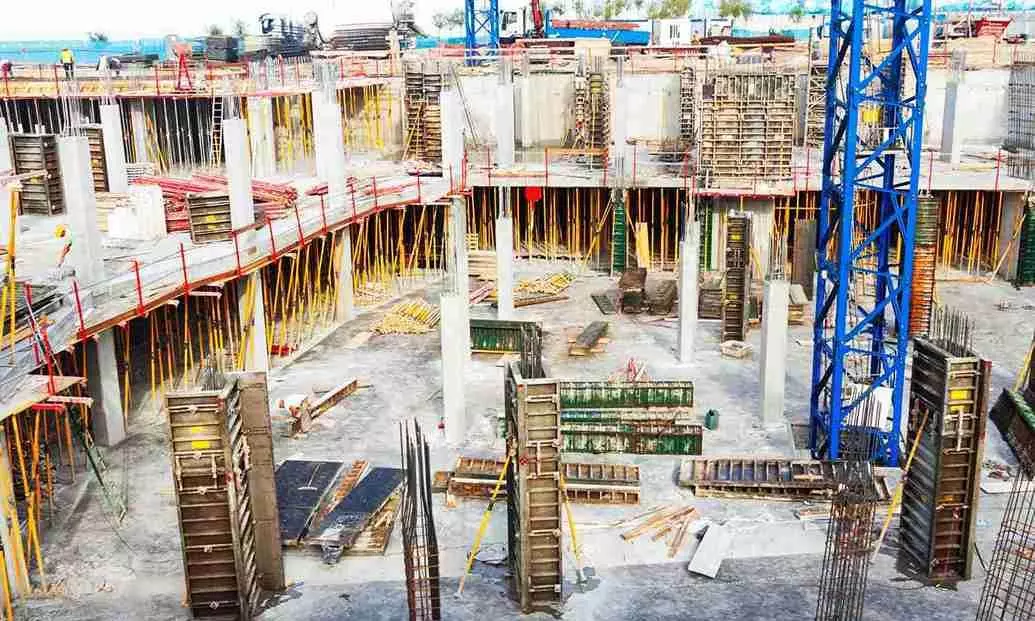
- Home
- India
- World
- Premium
- THE FEDERAL SPECIAL
- Analysis
- States
- Perspective
- Videos
- Sports
- Education
- Entertainment
- Elections
- Features
- Health
- Business
- Series
- In memoriam: Sheikh Mujibur Rahman
- Bishnoi's Men
- NEET TANGLE
- Economy Series
- Earth Day
- Kashmir’s Frozen Turbulence
- India@75
- The legend of Ramjanmabhoomi
- Liberalisation@30
- How to tame a dragon
- Celebrating biodiversity
- Farm Matters
- 50 days of solitude
- Bringing Migrants Home
- Budget 2020
- Jharkhand Votes
- The Federal Investigates
- The Federal Impact
- Vanishing Sand
- Gandhi @ 150
- Andhra Today
- Field report
- Operation Gulmarg
- Pandemic @1 Mn in India
- The Federal Year-End
- The Zero Year
- Science
- Brand studio
- Newsletter
- Elections 2024
- Events
- Home
- IndiaIndia
- World
- Analysis
- StatesStates
- PerspectivePerspective
- VideosVideos
- Sports
- Education
- Entertainment
- ElectionsElections
- Features
- Health
- BusinessBusiness
- Premium
- Loading...
Premium - Events

That is the surest way to avoid home buyers finding themselves stranded with stalled construction instead of homes for which they have borrowed big
Earlier this month, the Supreme Court ordered the government to set up a committee to evolve measures to help home buyers who find that the properties they have invested in are stuck in stalled construction, even as their builders go into insolvency.
A comprehensive solution to prevent this kind of a predicament for hardworking people who pay rent for their current dwellings and equated monthly instalments on the loans financing the purchase of new homes, whose delivery by the builder gets delayed indefinitely, has been proposed by the Mint newspaper. Its editorial suggests barring the sale of any new home until it is ready for the buyer to move in.
Would the price go up?
This proposal is sound, even if it might seem to have one downside. At present, the real estate developer sources a part of the financing needed for the project from the home buyer, and that financing is interest-free for the developer. The cost of construction, therefore, is lower by the avoided interest payment on the capital accessed from home buyers. By barring sales of anything but completely built homes, would policy not make homes less affordable for the buyer?
It would not. The buyer would no longer bear the double burden of rent and EMI. Potentially, she could build up a corpus of savings with the avoided double expenditure on housing of rent and EMI, and even earn a return on it by investing the corpus in sensible assets that privilege secure returns over high but risky returns. She also totally eliminates the risk of investing in a housing project that, instead of delivering a liveable home in three years, presents her with a nightmare of dashed hopes, locked savings, anxiety, litigation and legal expenses.
Also read: Why the mere drop in GST on cement may not bring relief to homebuyers
China’s example
Mandating that only completely built homes can be sold has a big, added benefit: elimination of one layer of systemic risk. China’s property sector collapse offers free lessons. We would be dumb to ignore them. Chinese property giant Evergrande had built up a debt burden of over $300 billion, some estimates reaching $330 billion, before the company was liquidated. It had pre-sold homes to buyers that it hoped to build, and used the sale proceeds to buy land and complete homes sold to previous batches of home buyers.
Evergrande was over-leveraged, meaning that its debt as a proportion of assets or equity was too large to sustain. That was the case with a great many Chinese property developers. A company’s earnings before interest payments and taxes (EBIT) as a proportion of its interest expense is a measure that offers a snapshot of debt sustainability. This is called the interest coverage ratio. An interest coverage ratio of 2 would indicate robustly sustainable levels of debt. A group of 21 Chinese property developer reported an interest coverage ratio of 0.91 — their earnings were not sufficient to pay interest on their debt — in 2021.
Problem of oversupply
Several hundred real estate developers have filed for bankruptcy in China over the past four years, creating a financial problem, besides a problem of demand for construction materials, that has slowed down the entire economy. Evergrande just happens to be the biggest of them. They managed to build up huge inventories because they could, on the one hand, pre-sell homes before they were built, ploughing the proceeds into fresh construction, and, on the other, access the debt to fund such expansion. Ending the sale of homes before their construction is complete would not eliminate the build-up of surplus inventory, but would give the industry a firmer estimate of likely demand and help it avoid excessive construction.
Even if the construction industry ignores the signals, the banks financing them would turn more prudent. Many of them would also be funding the home buyers, and they would have a better handle on trends in actual housing demand. In China, housing used to be the major form of saving for the population. Home ownership is well over 90 per cent, and many people have invested in second and even third homes, in the absence of a functional market for financial savings. This increased the speculative demand for housing, and aggravated the problem of oversupply.
Also read: How Ampa, with Taj, hopes to reshape Chennai's luxury housing landscape
Sources of free capital
Incidentally, developing and growing a market for diverse financial saving instruments for China’s huge middle class is such a mouth-watering opportunity for the world’s largest financial firms that they would lobby heavily to stop US President Donald Trump from creating a mess with trade that would make the Chinese government shut them out from that opportunity.
If a developer can sell only fully-built homes, the gap between tapering demand from new buyers and launch of new projects would be compressed, curbing the scale of oversupply. This would be a major systemic benefit.
If the developer does not have access to free capital from home buyers, where is he supposed to get his funds from? Real Estate Investment Trusts that mobilise the public’s savings for investing in the sector are one source. A functional market for corporate debt is another. A project has as assets land and the buildings the project would develop. Bonds could be issued against the expected returns from these assets. Every small project need not tap the debt market directly. A non-banking finance company that lends to several such projects could issue the bonds and make loans to the projects out of the proceeds.
India’s growth industry
India’s current level of urbanization, approximately 35 per cent, is some 15 percentage points below the world average and just over half that of China. With proper planning of town locations in a state and proper urban planning for all the towns that are built, real estate development is a growth industry in India. It should not have a problem obtaining capital for its growth.
Also read: Real estate goes digital as strict regulatory norms block black money flow
There is no reason for individual aspirants to home ownership to get caught in the cracks that develop because too many entities, some of them wholly unworthy, chase India’s urban opportunity in a haphazard fashion. It is better to bar sale of homes before they are built than for the government and the Supreme Court to struggle to find ways and means to do justice to hapless home buyers who happen to have put their trust and money in wrong projects and unethical developers.
(The Federal seeks to present views and opinions from all sides of the spectrum. The information, ideas or opinions in the articles are of the author and do not necessarily reflect the views of The Federal)


